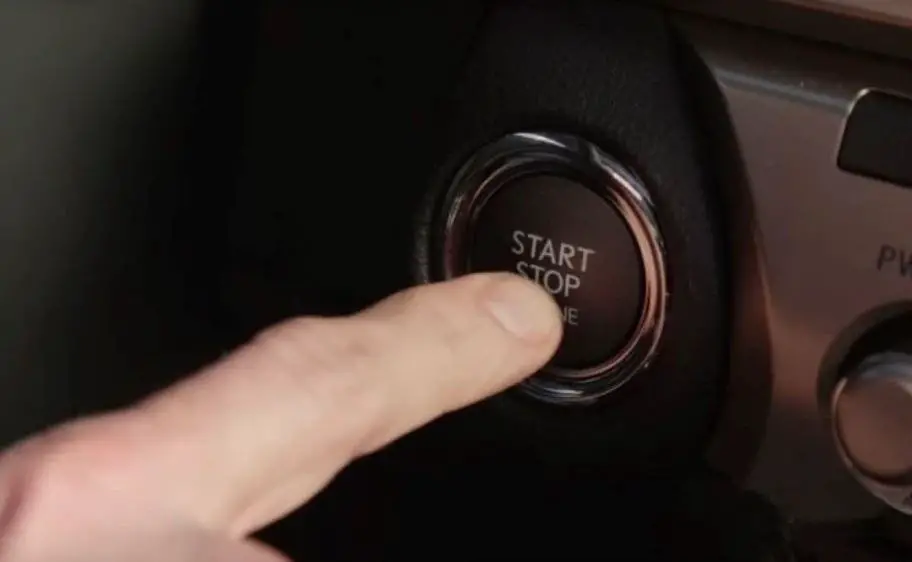New features are often added to automobiles to improve the driving experience and boost safety as technology develops. One such advancement is the push-button start system, which has become popular in contemporary vehicles as it replaces older key-based ignition systems.
Drivers who utilize this technology often may see the warning “Depress Brake Pedal to Start Engine” on their dashboard while attempting to start their car. Yet what happens if you push the brake pedal, yet your automobile won’t start? Let’s look at it.
In brief, the “Depress Brake Pedal to Start Engine” sign ensures that the automobile stays stationary during engine start-up and is a crucial safety element in cars with push-button start systems. Even if you follow the message’s directions, the engine may still not start due to common problems, including a broken brake pedal switch, low brake fluid levels, electrical difficulties, or problems with the push-button start mechanism.

Typical Safety Feature
As a crucial safety measure intended to guarantee that the vehicle stays stopped while the engine is started, the notice “Depress Brake Pedal to Start Engine” is included. The risk of mistakenly starting the car when the engine starts is greatly reduced by requiring the driver to depress the brake pedal. This safety measure is especially important in automobiles with automatic gearboxes since it prevents sudden and unwanted movement that could cause accidents or damage to the vehicle.
Troubleshooting Typical Problems
Even though the “Depress Brake Pedal to Start Engine” notice is often easy to grasp, there may be times when the car won’t start despite your efforts.
Faulty Brake Pedal Switch
The sensor that determines whether the brake pedal is depressed is known as the brake pedal switch or the brake light switch, or the stop lamp switch. This switch, linked to the car’s electrical system, is close to the top of the brake pedal assembly. The car may not detect when the brake pedal is being pushed if the switch is malfunctioning, broken, or out of place, which would prevent the engine from starting.
You must get access to the region around the brake pedal assembly to inspect the brake pedal switch. Check for any obvious deterioration, misalignment, or damage. In certain cases, the switch may be changed or cleaned to get it back to working properly. However, the switch must be changed if it is defective or broken.
Brake Fluid Level
Low brake fluid levels may cause problems, including difficulty starting the car. The braking fluid reservoir is usually found beneath the hood, behind the engine compartment. Look for the reservoir’s minimum and maximum fill lines, which show the proper fluid level. Fill the brake fluid reservoir if it is low with the proper fluid, as directed in your owner’s handbook.
Low brake fluid might indicate a braking system leak or worn brake parts. A qualified technician must examine the braking system if you notice a persistent decline in brake fluid levels to determine the issue’s fundamental cause and take appropriate action.
Electricity Problems
The warning “Depress Brake Pedal to Start Engine” may show even when the brake pedal is depressed due to electrical issues, which may manifest in many ways. These problems may include faulty relays, blown fuses, or damaged wiring.
Start by looking over the car’s electrical system for any obvious issues, such as frayed wires, rusted connections, or worn-out insulation. Additionally, you should examine the fuses for the push-button start and the braking system. A replacement fuse with the same amperage may replace a blown one. You may require a more complete examination and diagnosis if the problem persists.
Push-Button Start System Not Working
After ruling out the problems above, the push-button start mechanism may be at fault. The key fob, the button, and the car’s computer system are some parts the push-button start system depends on to work properly. The “Depress Brake Pedal to Start Engine” notice may display, and the engine may not start if any of these parts malfunction.
The following are some possible problems with the push-button start system:
- Dead key fob battery: The wireless connection between the key fob and the car is disrupted by a dead battery. In this situation, changing the key fob batteries could fix the problem.
- Push-button malfunction: Over time, the push-button may deteriorate or sustain damage. If this happens, a qualified technician may need to replace the button.
- Having trouble communicating with the car’s computer, The push-button start feature is controlled by the vehicle’s computer system. The computer system may not work as planned if it has an issue, such as a software bug or a communication fault. In these situations, a qualified technician may need specialized diagnostic instruments to identify the problem and suggest the best action.
Conclusion
In contemporary automobiles with push-button start systems, the phrase “Depress Brake Pedal to Start Engine” is an essential safety element. Drivers may guarantee the safe operation of their vehicle and avert possible accidents by understanding the message’s significance and being able to resolve typical problems associated with it.
The notice may come up, and the engine may not start due to faults with the brake pedal switch, brake fluid levels, electrical problems, or the push-button start mechanism itself. Consult a qualified technician for help if you need clarification about the cause or how to resolve a problem linked to this message.

